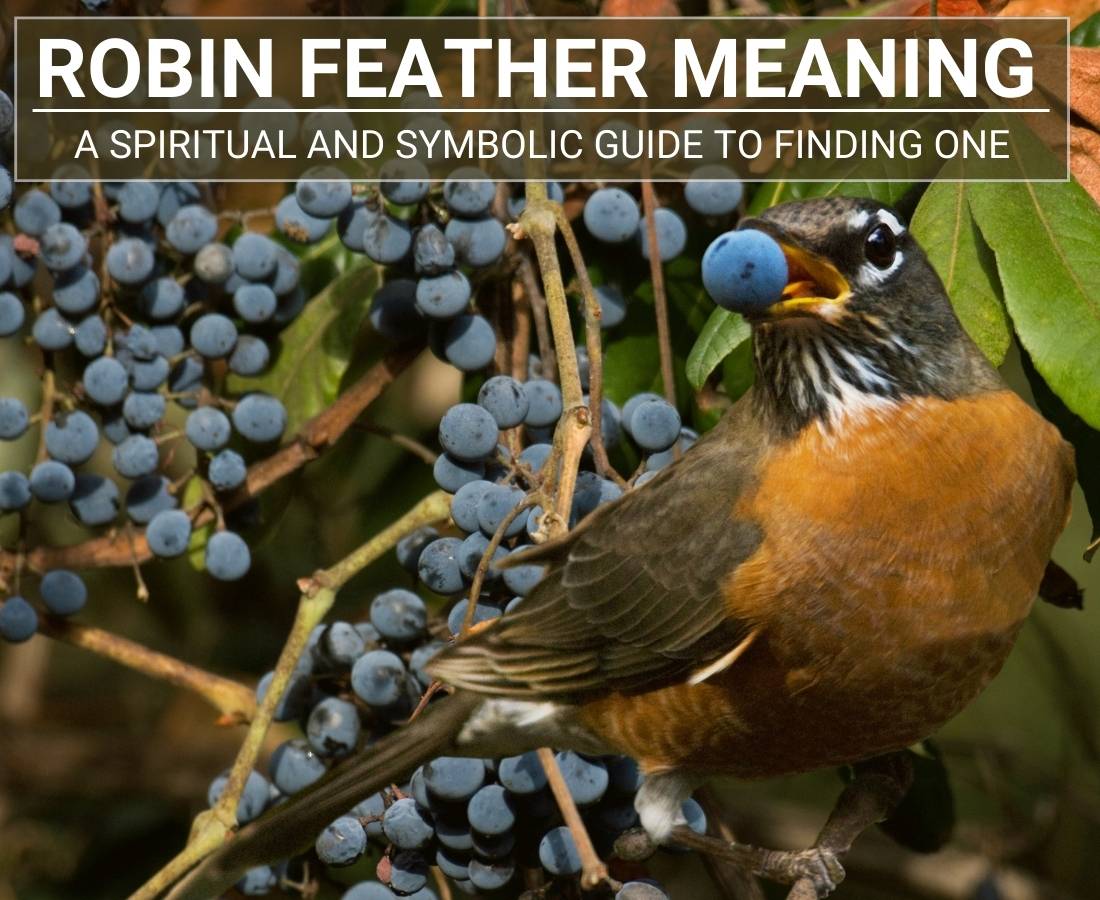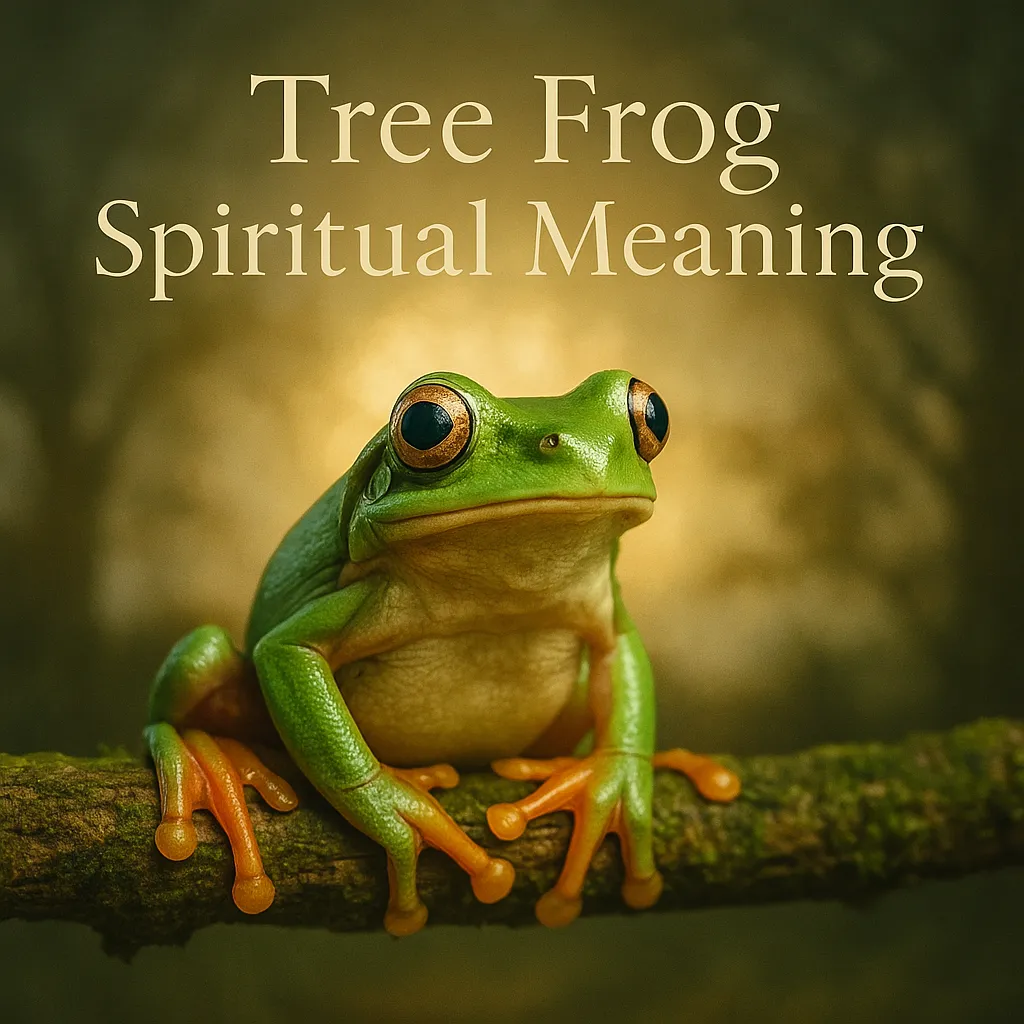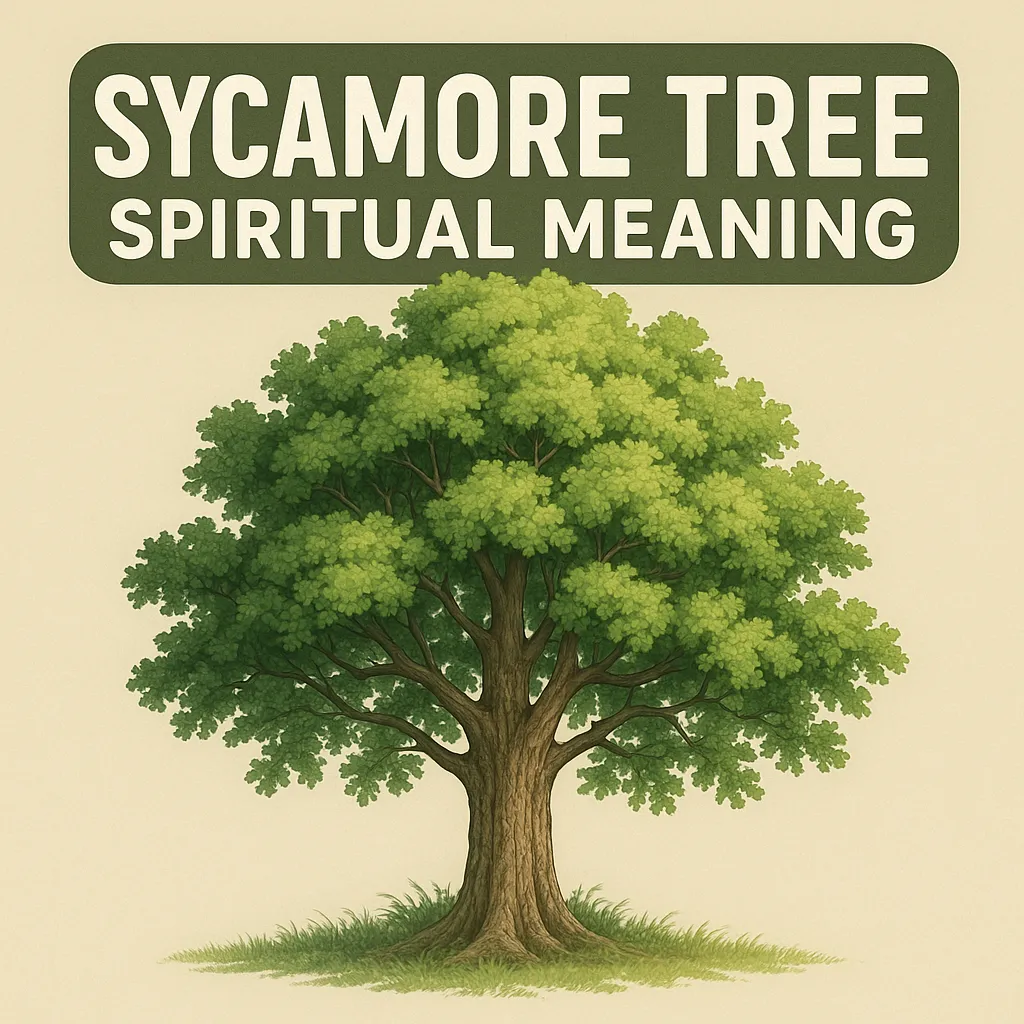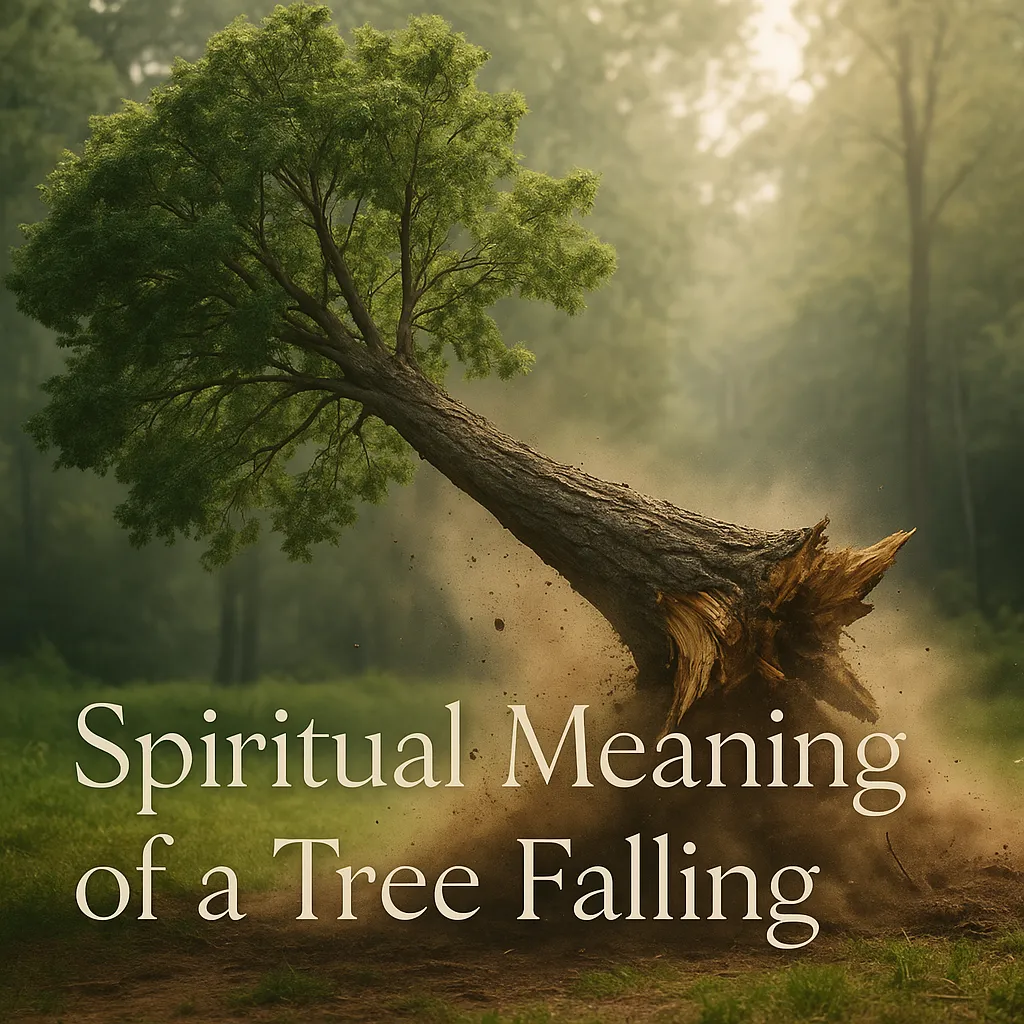Table of Contents
- 1 Key Takeaways
- 2 What does a Robin feather look like?
- 3 Robin Feather Symbolism
- 4 Robin symbolism in different cultures
- 5 Robin spirit animal
- 6 Fascinating Robin Behavior and Seasonal Patterns
- 7 FAQ
- 7.1 What do robin feathers symbolize?
- 7.2 Is finding a robin feather good luck?
- 7.3 How do American robin feathers differ by region?
- 7.4 What do different cultures believe about the robin’s red chest?
- 7.5 How have robins demonstrated resilience as a species?
- 7.6 When is robin nesting season?
- 7.7 What foods attract robins to gardens?
Key Takeaways
- Robin feathers symbolize resilience, gratitude, and occasionally anger, with their distinctive orange-red breast feathers representing different meanings across cultures.
- Finding a robin feather can be interpreted as a sign of good luck, new beginnings, or spiritual messages, especially if the robin is your spirit animal.
- American robin feathers vary in appearance depending on their habitat, from the humid Pacific Northwest to desert regions, affecting the lightness or darkness of their plumage.
- In Native American, Celtic, and Christian traditions, the robin’s red chest is associated with fire, blood, and sacrifice, often connected to origin stories explaining their distinctive coloration.
- Robins demonstrate remarkable resilience, having recovered from population declines caused by DDT in the 1900s, and many choose not to migrate during winter months, showing adaptability to changing environments.
Did you know that a robin can travel over 3,000 miles during migration? These fantastic birds have beautiful brown, gray, and orange feathers that are easy to come by if you live near a forested area.
Have you ever found a robin feather? If so, what did it mean to you? For many people, finding a robin feather is a sign of good luck. But the robin feather meaning goes far beyond just good luck. This beautiful bird has long been associated with hope, joy, new beginnings, and other positive messages.
In this article, we’ll explore what a robin feather meaning is, the cultural significance of this bird, and what finding this feather means if the robin is your spirit animal.
“Young robin do not fall out of the nest. They fly up to it.”
— Chinese proverb
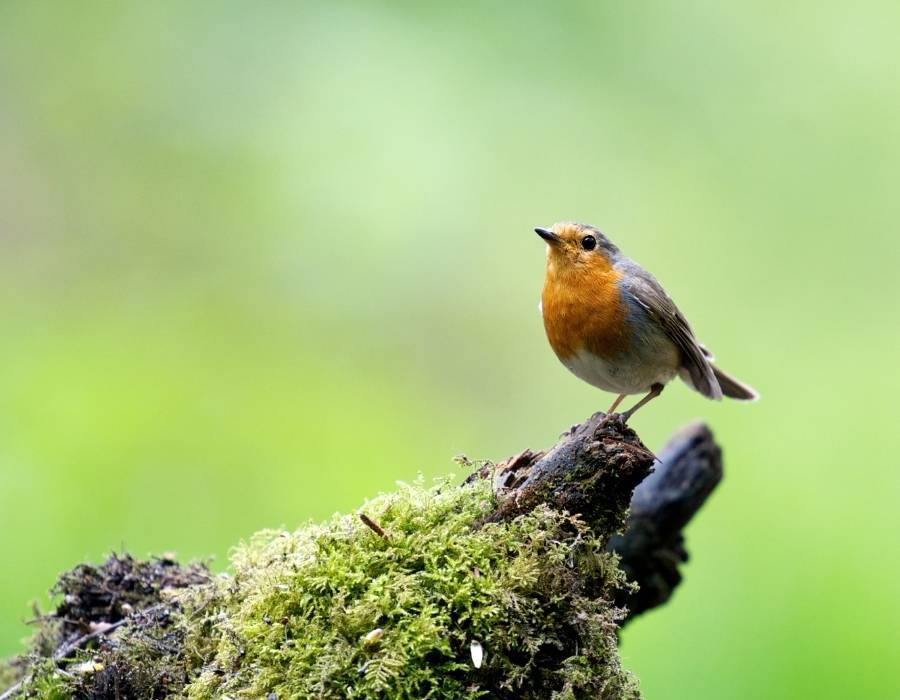
What does a Robin feather look like?
Robins are small songbirds with reddish-orange breast feathers (check post: orange feather meaning) (check post: orange feather meaning). Their belly and throat feathers are white, and they have dark brown heads. The robin’s wings are gray with white bars. Some robins also have a yellow patch on their upper wing. The average robin feather is about two to three inches long.
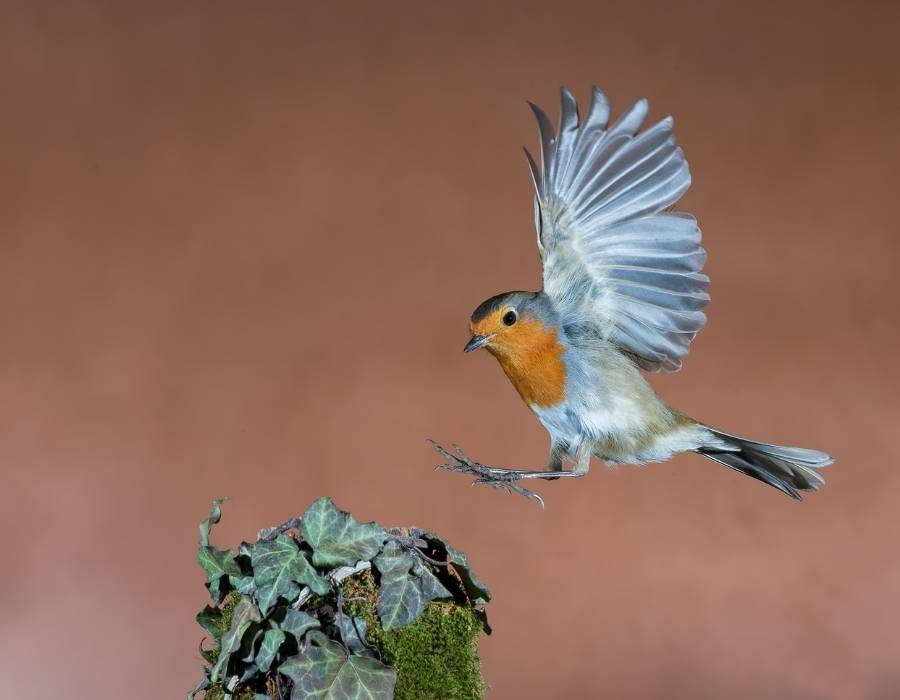
When you find a robin feather, it is usually whole and the feather color is clear and the whole feather is in good condition. This is because robins preen their feathers regularly to keep them clean and healthy. If you find a robin feather that is damaged or broken, it may symbolize something different than a healthy feather would.
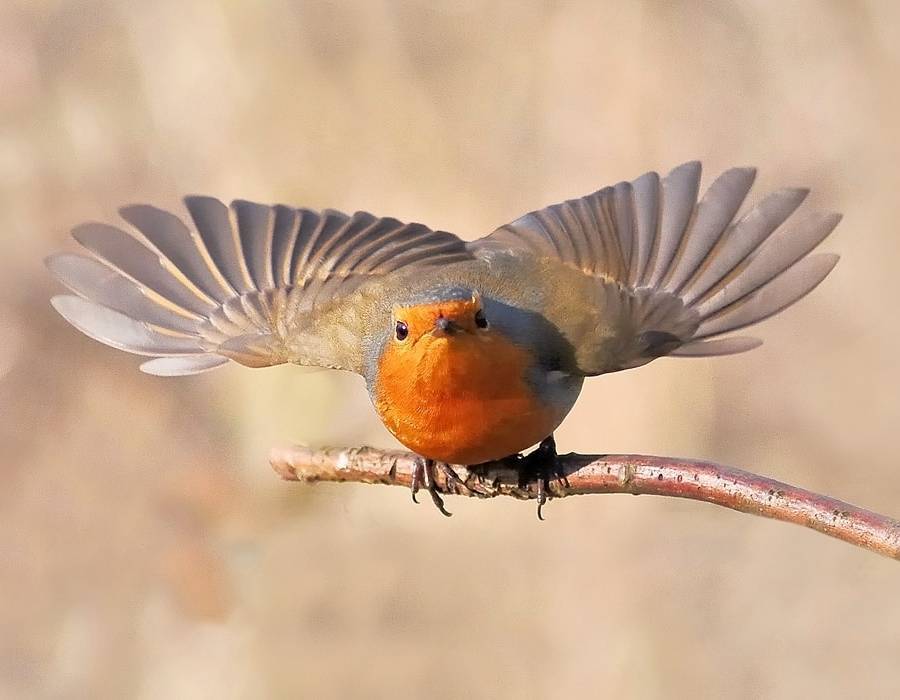
The robin is a bird that can be found all throughout North America. It has the ability to thrive in any type of environment, from woodlands and gardens with short grass foraging opportunities on its menu; it will even nest under some trees where there’s plenty of space! The European version lives across Europe as well as parts of Asia (like Turkey) and Africa.
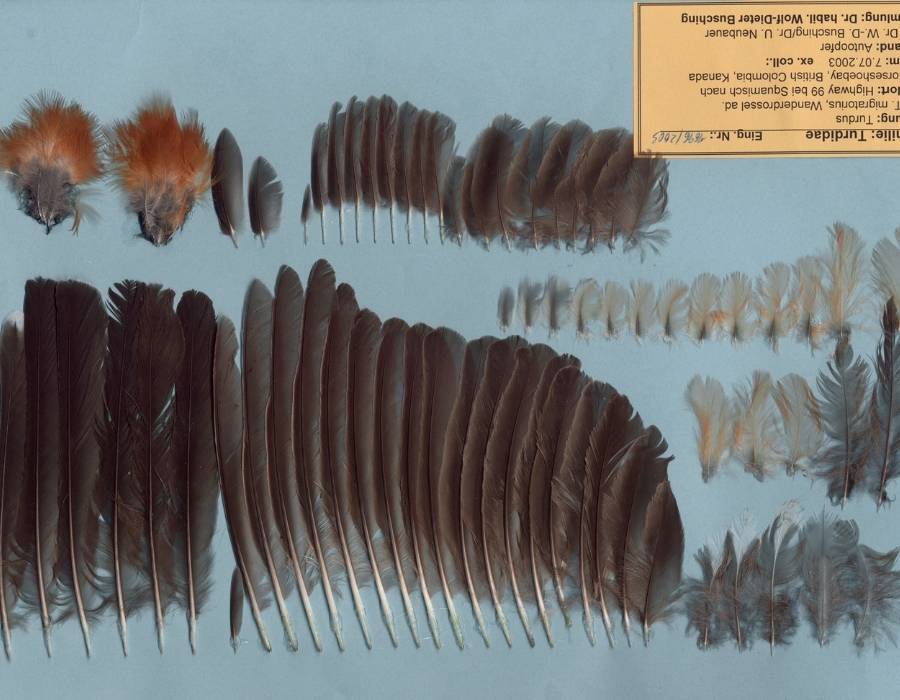
In North America, the American robin is one of seven different subspecies. These birds can be found in both very humid areas like Pacific Northwest and desert regions where they live under different conditions with more limited rainfall than what’s available to them at home base – which will determine how light or dark their feathers may appear compared against other populations that have differing amounts moisture levels throughout its climate range.
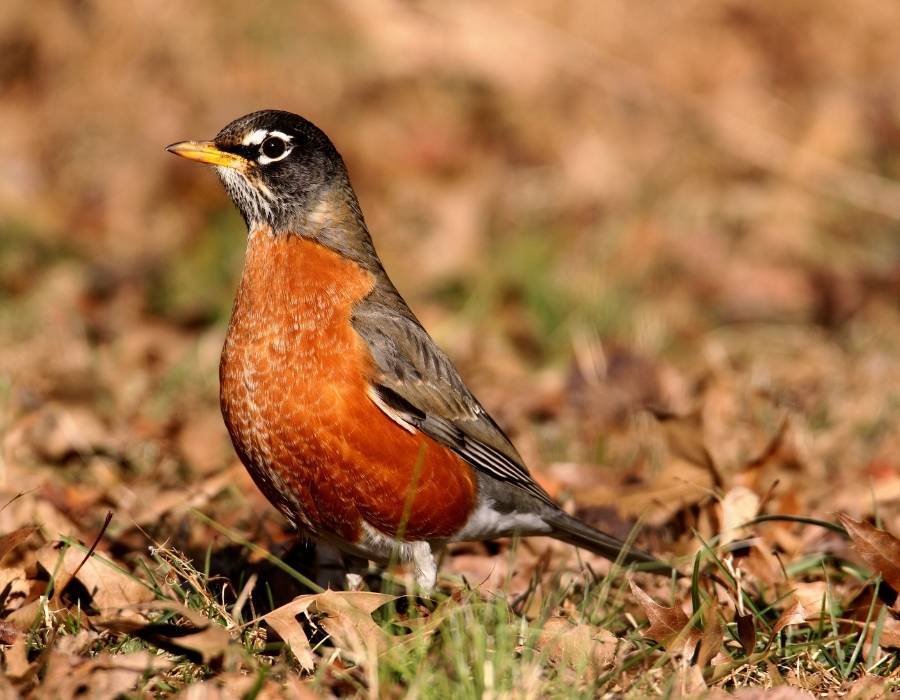
Robin Feather Symbolism
Birds are often seen as messengers from the spiritual realm. They are creatures that can travel between the physical world and the world of spirit. Because of this, they often carry messages from one realm to the other.
The feathers of birds are also associated with air and wind. This element is often associated with new beginnings, change, and travel. So, when you find a robin feather, it may be a sign that something new is about to come into your life. It could also be a reminder to stay light and open-minded as you move through changes.
While there are many meanings behind the robin feather, the most common messages these feathers represent are resilience, gratitude, and anger.
Resilience
In the 1900s, the robin populations within the United States experienced a decline due to the use of an insecticide called DDT. But, once they banned this chemical from being used, the robin population began to rise again.
A robin feather is a sign of resiliency and the ability to thrive, even after challenging circumstances.
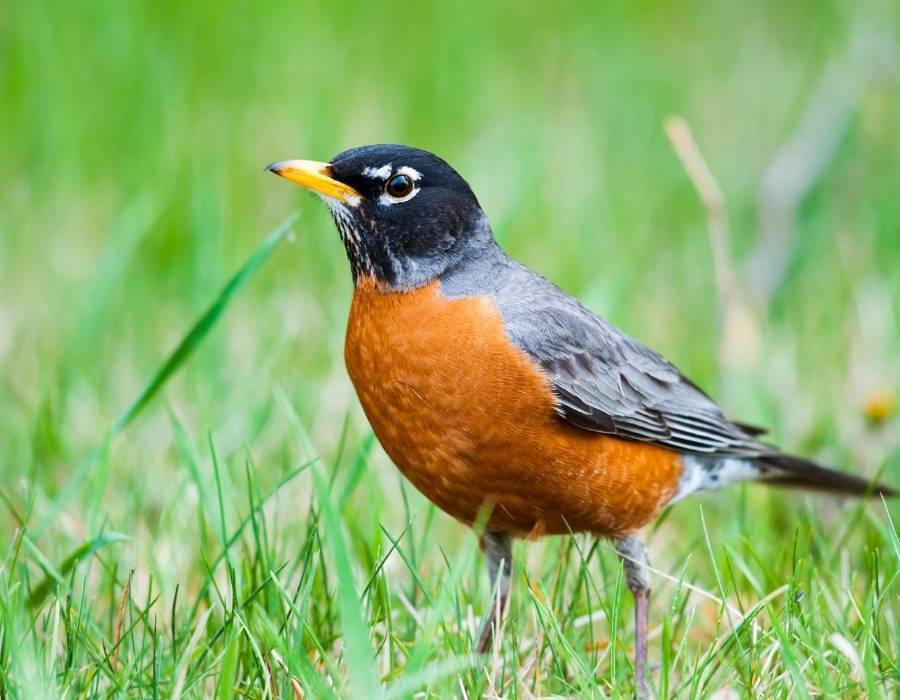
Gratitude
Some robins are known for migrating toward warmer climates as the seasons’ change. Interestingly, not all robins migrate; some prefer to stick around their home area.
The feather of a robin holds pure gratitude for life, enough for them to resist migrating even in the colder months.
Anger
There’s a common saying that robins “see red,” which refers to someone or something extremely angry. While these birds don’t see red, they have been known to attack red items, such as dead red birds, red beards, and red leaves.
A robin feather may be a symbol of anger or frustration. These feathers indicate that there could be unresolved emotions that need to be dealt with.
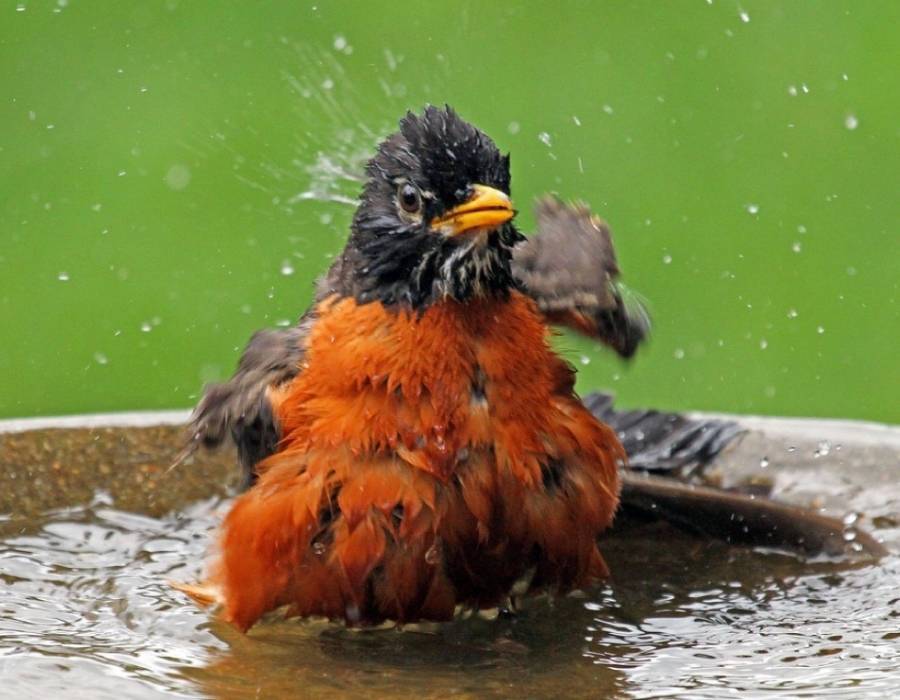
Robin symbolism in different cultures
Robins are most commonly found throughout Northern America, making them a staple in cultures in and around the continent.
Native American culture
Some Native American tribes associate robins with the element of fire due to their orange-red chests. Their presence was also considered a sign of peace and contentment.
Robins have also been associated with motherhood in certain tribes. They believed that finding their feathers or seeing these birds interacting with their babies was a positive omen if they were expecting a child or trying to become pregnant.
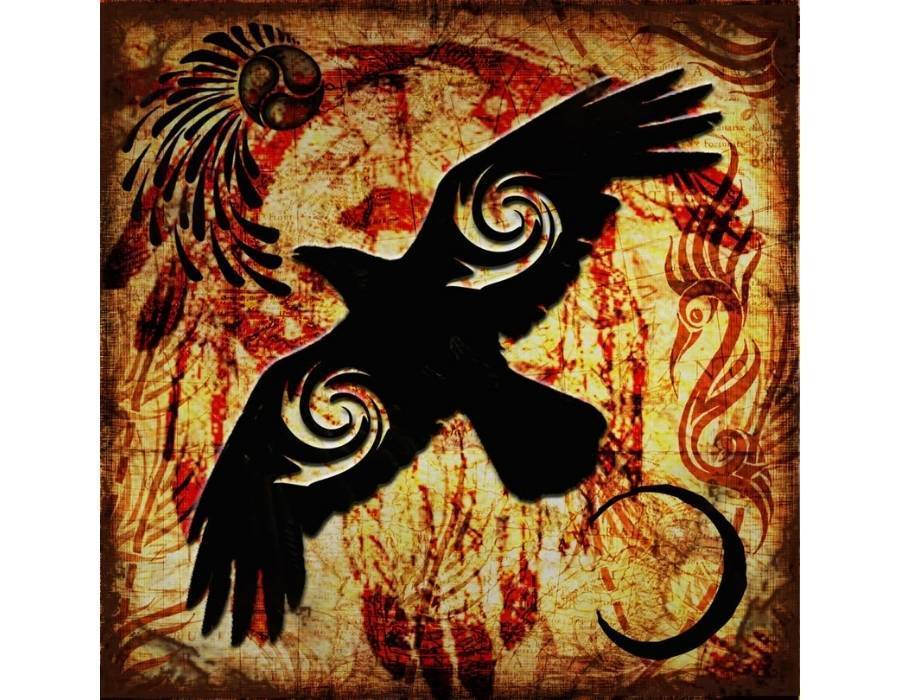
In the Native American legend, How Tol-Le-Loo Stole Fire, the robin is depicted as a protective bird. The story follows a mouse set on stealing the fire to have light for his community.
The mouse traveled until he found fire amongst the Valley People. The robin who lived there caught the mouse trying to steal their fire and protected it by covering the fire with his chest.
Native Americans believed that the robin’s noble choice to protect the fire of his people is what gave these birds their bright-chested feathers.
Celtic Folklore
In Celtic folklore, Pagans celebrate “the birth of the new sun.” They often associated the robin with the new sun and were a symbol in these celebrations.
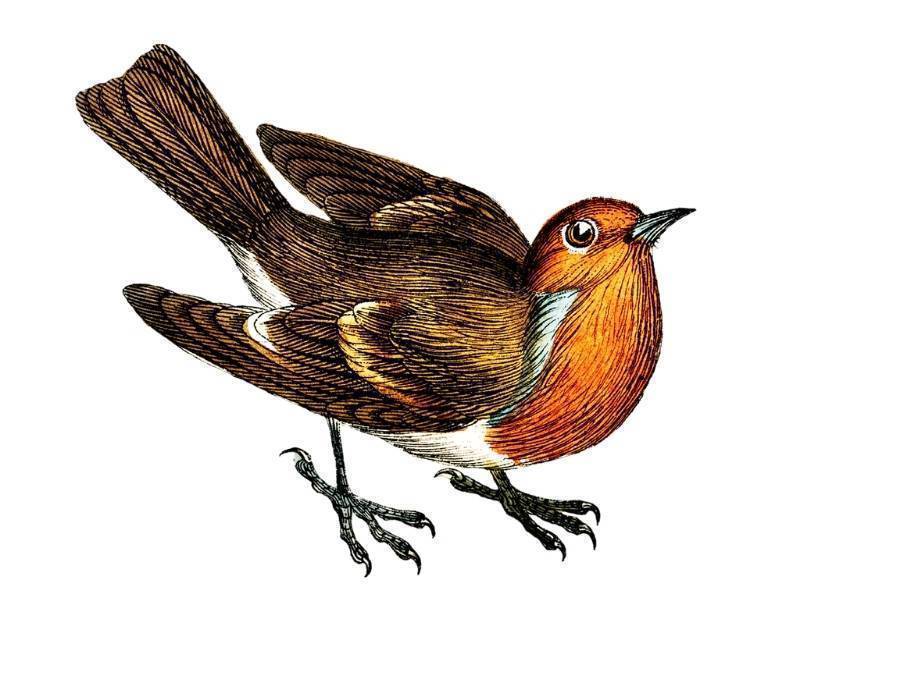
In their folklore, the robin is believed to have destroyed the old sun, causing its blood to spill onto the bird, painting its chest red. They state that these birds could represent death, and finding a robin feather could signify someone close to you was nearing death.
Christian culture
In Christianity, some believe a robin stayed with Jesus in the last moments of life. The blood from Jesus transferred onto this bird; they think this is where their fiery chests originated.
Some Christians believe these birds helped tend to the fire that kept baby Jesus warm, where their bright chests first developed.
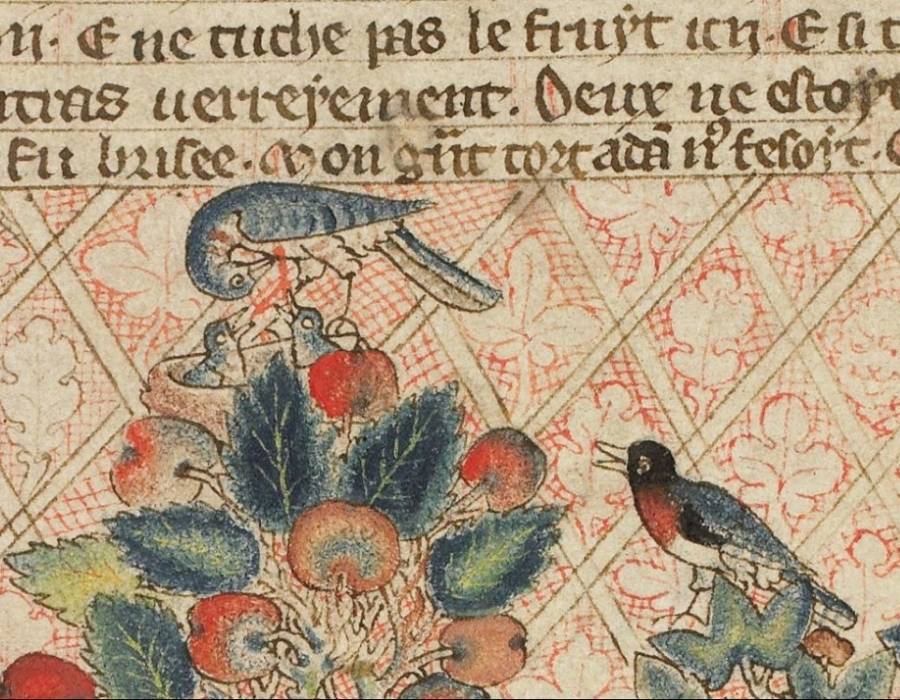
Robin spirit animal
The robin spirit animal flies into your life and can be called upon to help guide you through life’s challenges. For more information on these fantastic birds, check out this video!
Fascinating Robin Behavior and Seasonal Patterns
Have you ever wondered where do robins roost at night? Unlike many birds that seek birdhouses or cavities, robins typically roost in dense evergreen trees or thick shrubs that provide protection from predators and harsh weather. During winter months, they often gather in large communal roosts, sometimes containing hundreds of birds for added warmth and safety. This social roosting behavior is just one example of why do birds flock together – it offers protection, efficient foraging, and thermal advantages during cold seasons.
Robin Nesting Habits and Feeding
For bird enthusiasts wondering what month do robins lay eggs, these industrious birds typically begin nesting in April through July, with most egg-laying occurring in May. A female robin can produce 2-3 broods per season, laying 3-5 beautiful blue eggs each time. If you’re interested in attracting robins to your garden, consider setting up a bird table with their favorite foods. Unlike many garden birds that prefer seeds, robins are primarily insectivorous and frugivorous, enjoying mealworms, berries, and soft fruits.
When feeding garden birds UK residents should note that robins particularly appreciate live or dried mealworms, unsalted peanuts (crushed), mild cheese, and fruit – especially during winter months when natural food is scarce. Unlike the shy behavior of some garden birds, robins often become quite tame, sometimes even eating from an outstretched hand. Their distinctive orange-red breast – immortalized in the phrase “robins will wear their feathery fire” – makes them one of the most beloved and recognizable garden visitors throughout the year.
Cultural Significance Beyond Feather Symbolism
The cultural importance of robins extends beyond their physical features. The image of the robin hood feather in the famous outlaw’s cap (though historically inaccurate) has become an enduring symbol of justice and rebellion against authority. This connection to righteousness mirrors how robins are often portrayed in children’s literature and animation, appearing as helpful, friendly companions – quite unlike discussions of are Disney princesses bad role models, robins in stories consistently represent positive values of resilience and friendship. Interestingly, just as who were the first settlers in Texas brought their European cultural traditions to new lands, European settlers in North America transferred their affection for the European robin to the American robin, despite them being different species with similar red breasts.
Sources
- https://www.audubon.org/news/10-fun-facts-about-american-robin
- https://www.livingwithbirds.com/tweetapedia/21-facts-on-robin
- http://www.native-languages.org/legends-robin.htm
- https://nigelborrington.com/2016/11/29/birds-in-irish-folklore-the-robin/
- https://www.firstpeople.us/FP-Html-Legends/How_Tol-le-loo_Stole_Fire-Miwok.html
- https://www.boxwild.com/blogs/news/how-the-robin-became-a-symbol-of-christmas
FAQ
What do robin feathers symbolize?
Robin feathers symbolize resilience, gratitude, and occasionally anger. Their distinctive orange-red breast feathers carry different meanings across cultures. Many people associate these feathers with renewal and positivity, while some traditions connect them to protective qualities and spiritual messages.
Is finding a robin feather good luck?
Finding a robin feather is often considered a sign of good luck and new beginnings. If the robin is your spirit animal, it may represent an important spiritual message. Many people collect these feathers as talismans for positive energy and transformation.
How do American robin feathers differ by region?
American robin feathers vary in appearance based on habitat. Birds in the humid Pacific Northwest typically display darker plumage, while those in desert regions tend to have lighter coloration. These adaptations help robins blend with their specific environments and regulate body temperature.
What do different cultures believe about the robin’s red chest?
Native American, Celtic, and Christian traditions associate the robin’s red chest with fire, blood, and sacrifice. Many cultures have origin stories explaining this distinctive coloration, often connecting it to acts of bravery, compassion, or divine intervention throughout their mythology and folklore.
How have robins demonstrated resilience as a species?
Robins have shown remarkable resilience by recovering from population declines caused by DDT in the 1900s. Many robins no longer migrate during winter, demonstrating adaptability to changing environments. Their ability to thrive in various habitats, from forests to suburban gardens, showcases their extraordinary adaptability.
When is robin nesting season?
Robin nesting season typically runs from April through July, with peak egg-laying occurring in May. A female robin can produce 2-3 broods annually, laying 3-5 blue eggs each time. These industrious birds build cup-shaped nests using grass, twigs, and mud.
What foods attract robins to gardens?
Robins are primarily insectivorous and frugivorous, preferring mealworms, berries, and soft fruits. Unlike seed-eating garden birds, they enjoy live or dried mealworms, unsalted crushed peanuts, mild cheese, and fruits. During winter months, these foods become especially important when natural food sources are scarce.
